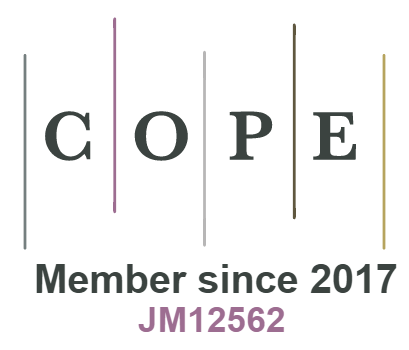Artificial Intelligence Waves on Space Computation Management: A Review Report
DOI:
https://doi.org/10.18034/ei.v8i2.500Keywords:
Artificial Intelligence, Waves Management, Space ComputationAbstract
When writing about the history of the internet, it is important to note that aerospace was among the significant pioneers in computer networking computer network for private was used in first airline reservation system “SABRE” in 1960 for American airlines. While sage was the first computer system in the world, its deficiencies led to the development of ARPANET. These systems formed the foundations for the internet and the development of other computer programs in aerospace, any deficiency led to the invention of a new program, giving birth to programming, CAD, and CAM that brought about simulations. Aerospace computing has evolved over the years and is now carrying the whole weight of the aerospace industry. Before the launch of any space vehicle or satellite, simulation has become a necessary step, checking for weaknesses for corrections to be done on the ground. Besides, computer simulation has been essential in training, facilitating the training of pilots worldwide. This article presents more information regarding the application of AI in aerospace computing, flight simulations, and their advantages in the aerospace industry.
Downloads
References
Donepudi, P. K. (2016). Influence of Cloud Computing in Business: Are They Robust?. Asian Journal of Applied Science and Engineering, 5(3), 193–196. http://doi.org/10.5281/zenodo.4110309
Donepudi, P. K. (2018). Application of Artificial Intelligence in Automation Industry. Asian Journal of Applied Science and Engineering, 7(1), 7–20. http://doi.org/10.5281/zenodo.4146232
Donepudi, P. K. (2019). Automation and Machine Learning in Transforming the Financial Industry. Asian Business Review, 9(3), 129-138. https://doi.org/10.18034/abr.v9i3.494 DOI: https://doi.org/10.18034/abr.v9i3.494
Donepudi, P. K., Ahmed, A. A. A., Saha, S. (2020). Emerging Market Economy (EME) and Artificial Intelligence (AI): Consequences for the Future of Jobs. PalArch's Journal of Archaeology of Egypt/Egyptolog, 17(6), 5562-5574. https://archives.palarch.nl/index.php/jae/article/view/1829
Gorur, B. K., & Calli, A. N. (2018). An Object-Oriented Agent-Based Framework for Modeling and Simulation in Aerospace. In 2018 AIAA Modeling and Simulation Technologies Conference (p. 0119). Retrieved from: https://arc.aiaa.org/doi/pdf/10.2514/6.2018-0119 DOI: https://doi.org/10.2514/6.2018-0119
Lee, S., Oh, B. S., Kim, Y., & Park, G. (2017). High-Altitude Environment Simulation of Space Launch Vehicle in a Ground-Test Facility. Journal of the Korean Society for Aeronautical & Space Sciences, 45(11), 914-921. Retrieved from: https://www.koreascience.or.kr/article/JAKO201734549519088.page DOI: https://doi.org/10.5139/JKSAS.2017.45.11.914
Lewis, B. (2016). Flight simulation in aerospace engineering education. Retrieved from: http://blewis.me/PP/resources/final-report.pdf
Linger, R. C. (2018). Behavior Computation of Aerospace Software for Validation of Security and Functionality. In 2018 AIAA SPACE and Astronautics Forum and Exposition (p. 5274). Retrieved from: https://arc.aiaa.org/doi/pdf/10.2514/6.2018-5274 DOI: https://doi.org/10.2514/6.2018-5274
O'Regan, G. (2016). Introduction to the history of computing: a computing history primer. Springer. Retrieved from: https://books.google.com/books?hl=en&lr=&id=6u16DAAAQBAJ&oi=fnd&pg=PR5&dq=history+of+aerospace+computing&ots=jiODaba9EJ&sig=r99uwNkxyAzyFZPX2kbYClHV4PU
Sucharov, M. (2018). Scholarly and public engagement in Jewish politics: A typical journey liminal space in ten short chapters. Shofar: An Interdisciplinary Journal of Jewish Studies, 36(3), 143-163. Retrieved from: https://muse.jhu.edu/article/708932/summary DOI: https://doi.org/10.1353/sho.2018.0042
--0--
Downloads
Published
Issue
Section
License
Engineering International is an Open Access journal. Authors who publish with this journal agree to the following terms:
- Authors retain copyright and grant the journal the right of first publication with the work simultaneously licensed under a CC BY-NC 4.0 International License that allows others to share the work with an acknowledgment of the work's authorship and initial publication in this journal.
- Authors are able to enter into separate, additional contractual arrangements for the non-exclusive distribution of the journal's published version of their work (e.g., post it to an institutional repository or publish it in a book), with an acknowledgment of its initial publication in this journal. We require authors to inform us of any instances of re-publication.









